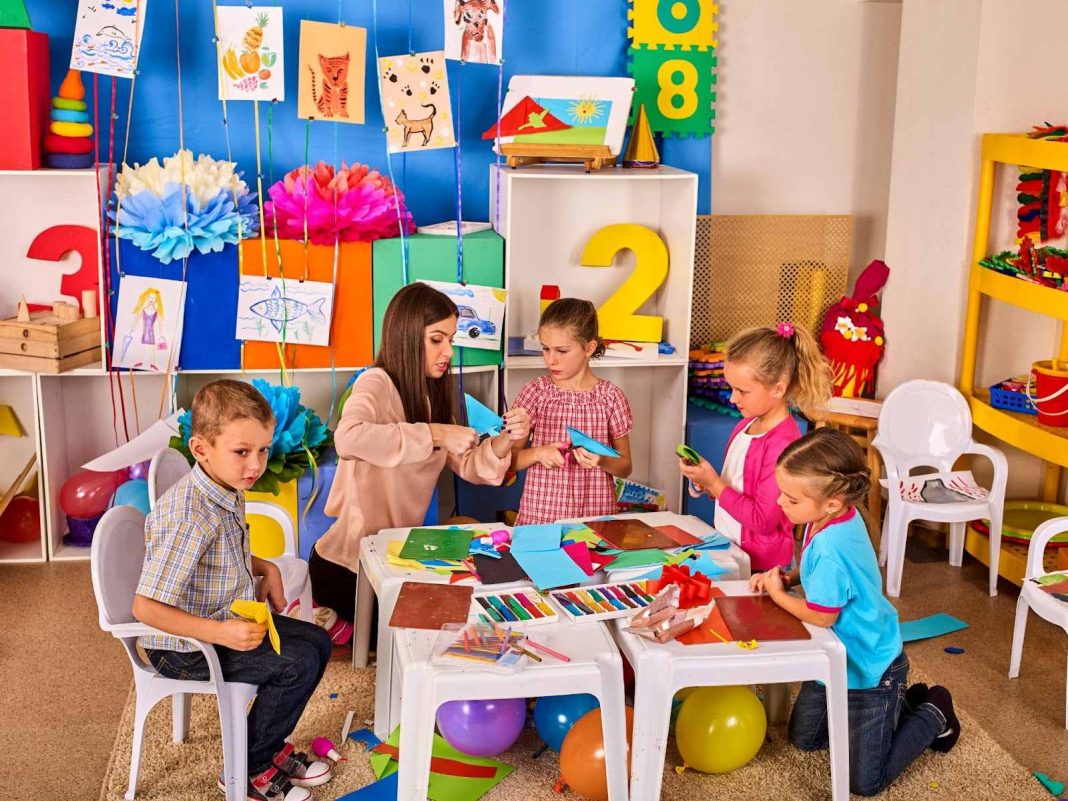A preschooler, wide-eyed and full of curiosity, standing on the brink of a brand-new world. It’s not just about colors, shapes, and numbers; it’s also about understanding feelings, making friends, and learning to navigate this emotional roller coaster called life. This is where social-emotional activities for preschoolers come into play. They aren’t just games; they’re the building blocks of a child’s emotional intelligence.
Math & ELA | PreK To Grade 5
Kids see fun.
You see real learning outcomes.
Watch your kids fall in love with math & reading through our scientifically designed curriculum.
Parents, try for free Teachers, use for free
In this blog, we’ll dive into the world of social-emotional development, explore why it’s crucial for those little learners, and look at some simple, yet powerful, social-emotional learning activities for preschoolers that can make a world of difference.
What is Social-Emotional Learning?
Think about a young child’s world – it’s not just about knowing their ABCs or counting to ten. It’s about the process of understanding how they feel, how others feel, and how to get along with the people around them. That’s what we call “Social-Emotional Learning” – it’s like their emotional compass as they sail through life’s waters. In simple words, social-emotional development is all about learning to recognize and manage feelings – like happiness, anger, or shyness. It’s about knowing how to make friends and share toys, but also how to solve problems when things don’t go as planned. This development can be fostered by Social Emotional Learning (SEL) Activities.
According to a research conducted by Yale School of Medicine, students when engaged in social and emotional learning (SEL) programs demonstrated “increased academic achievement and school functioning including improved attendance and engagement in learning. Students also showed improved social and emotional skills, attitudes, and behaviors, such as student self-efficacy, self-esteem, mindset, perseverance, and optimism, among others.”
Related Reading: Interesting Social-Emotional Learning Activities for Classroom
Why Social-Emotional Learning Activities are Important?
Social-emotional learning activities are designed with the purpose of fostering social emotional learning. The main reasons that make them important for life are:
- Life Skills Toolbox: Social-emotional activities are like a toolbox filled with essential life skills. They teach children how to navigate their feelings, communicate effectively, and build strong relationships.
- Foundation for Learning: Before kids dive into math and reading, they need a strong emotional foundation. Social-emotional learning provides this foundation, helping children focus better on academic tasks.
- Empathy and Compassion: Social-emotional learning fosters empathy and compassion. Kids who understand others’ feelings are more likely to be kind, inclusive, and considerate individuals.
- Mental Health Support: In an ever-changing world, emotional resilience is invaluable. These activities contribute to children’s mental well-being, helping them cope with stress and adversity. This emotional strength and resilience helps kids cope with adversity, paving their path towards a bright future.
Incorporating social-emotional learning into a child’s early years isn’t just about preparing them for school; it’s about preparing them for life. These skills serve as the building blocks for personal growth, meaningful relationships, and overall success.
Nurturing Young Emotions: 21 Fun Social-Emotional Activities for Preschoolers
Preschool years are like sponges soaking up life’s lessons. And when it comes to understanding feelings and making friends, these simple emotional development activities for preschoolers are like little drops of wisdom. Let’s dive into some preschool social emotional activities that make learning about emotions and social skills a lot of fun.
1. Emotion Charades
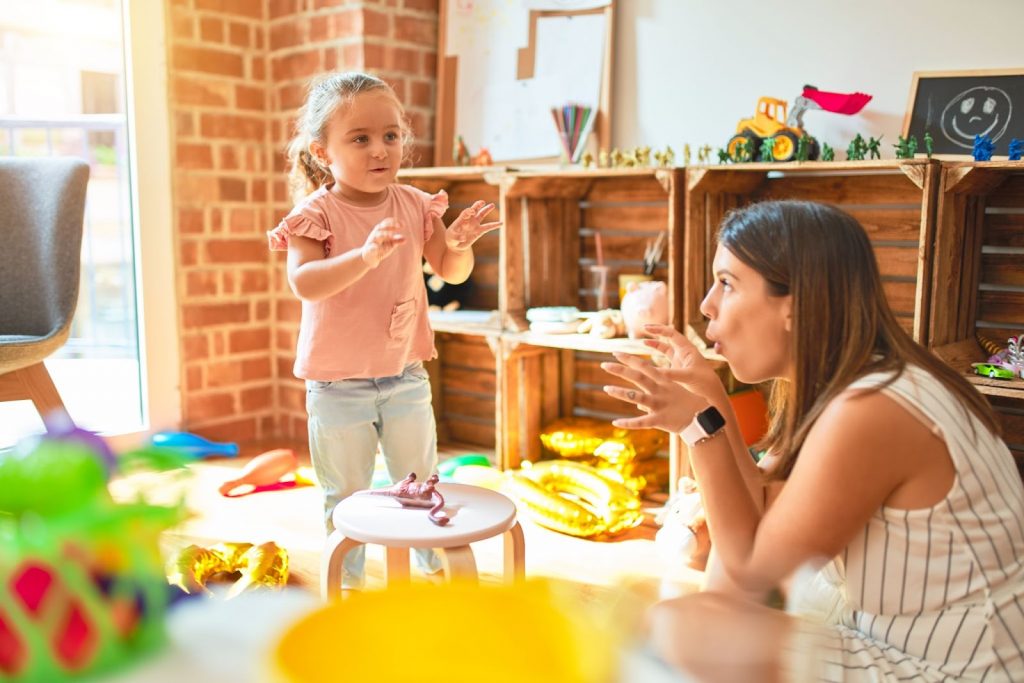
Emotion Charades is one of the most popular social emotional preschool activities. It is like a game of pretend where you act out an emotion, like being super happy or a little bit scared.
How can it help: It helps kids recognize feelings in themselves and others, fostering emotional understanding.
How to do it: Take turns making faces, using body language, and expressing emotions through play. Your child can also guess what you’re feeling. Then, switch roles, and let them be the emotion detective.
2. Feelings Faces Collage
Feelings Faces Collage involves creating a collage of different emotion faces cut out from magazines.
How can it help: It encourages discussion about emotions and when people might feel a certain way.
How to do it: Cut out faces showing different emotions – happy, sad, surprised, and more. Talk about how each person might be feeling and ask your child when they’ve felt that way too. It’s a crafty way to explore emotions.
3. Storytime Sharing
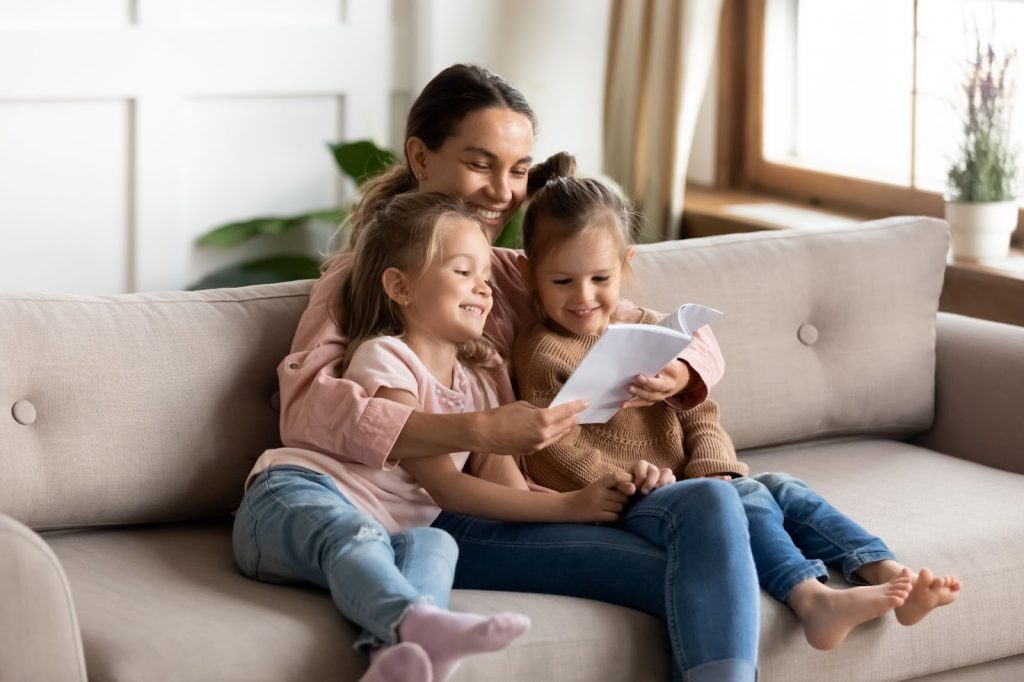
If you are looking for a simple social emotional activity, storytime sharing is the best option for you. It is like reading a book together and discussing the emotions of the characters.
How can it help: It helps children connect with the characters and their emotions, enhancing empathy and emotional comprehension.
How to do it: Pick a book with characters who feel things, and discuss those feelings as you read. Pause and ask questions like, “How do you think the character feels right now?” or “Have you ever felt like that?”
4. Friendship Bracelets
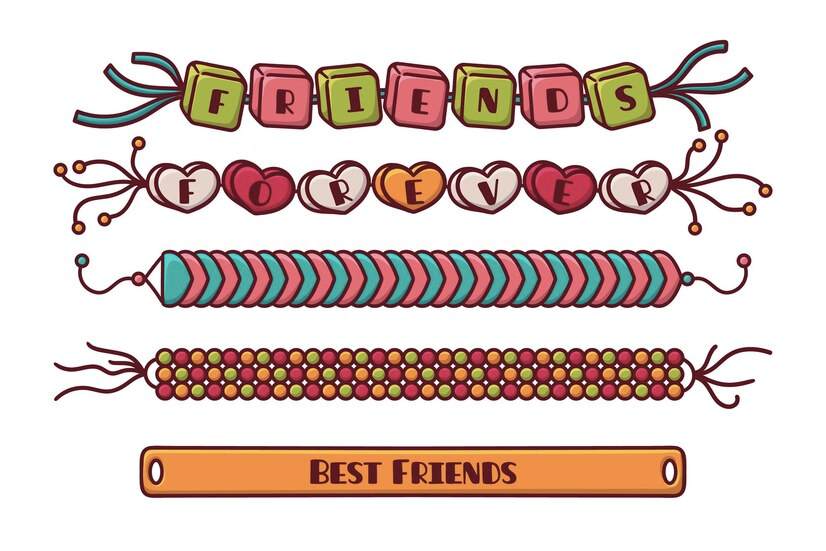
Friendship Bracelets involve making a special bracelet to represent emotions and friendships.
How can it help: It serves as a tangible reminder of feelings and relationships.
How to do it: Create a bracelet using different colored beads to represent emotions like happiness, kindness, and love. Talk about each emotion as you add a bead. When your child wears the bracelet, it’s like carrying their emotions and friendship wherever they go.
5. Building Empathy Towers
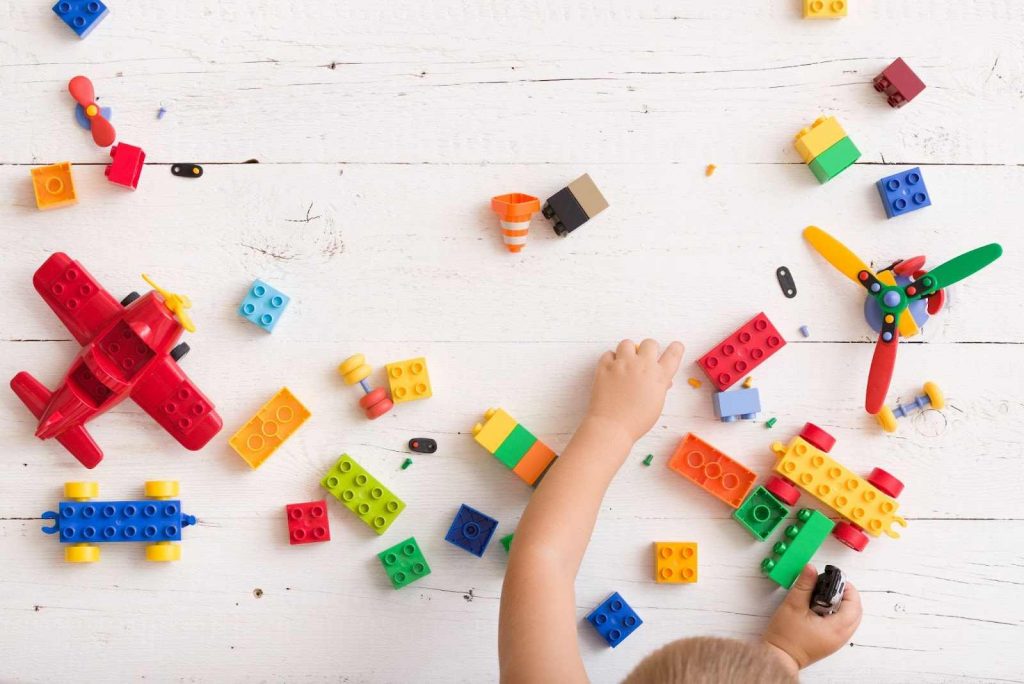
Building Empathy Towers is using building blocks to create towers that represent different emotions.
How can it help: It introduces empathy and understanding through creative play.
How to do it: Grab building blocks or LEGO bricks. Build towers together, but with a twist. Each block represents an emotion, and you talk about why someone might feel that way as you build.
6. Emotion Matching Game
Emotion Matching Game involves creating cards with different feelings and playing a matching game.
How can it help: It helps kids learn to recognize and associate emotions with their visual cues.
How to do it: Create emotion cards with different feelings like happy, sad, angry, and surprised. Flip them over and play a matching game. Discuss what each feeling means as you match the cards.
7. Gratitude Journals
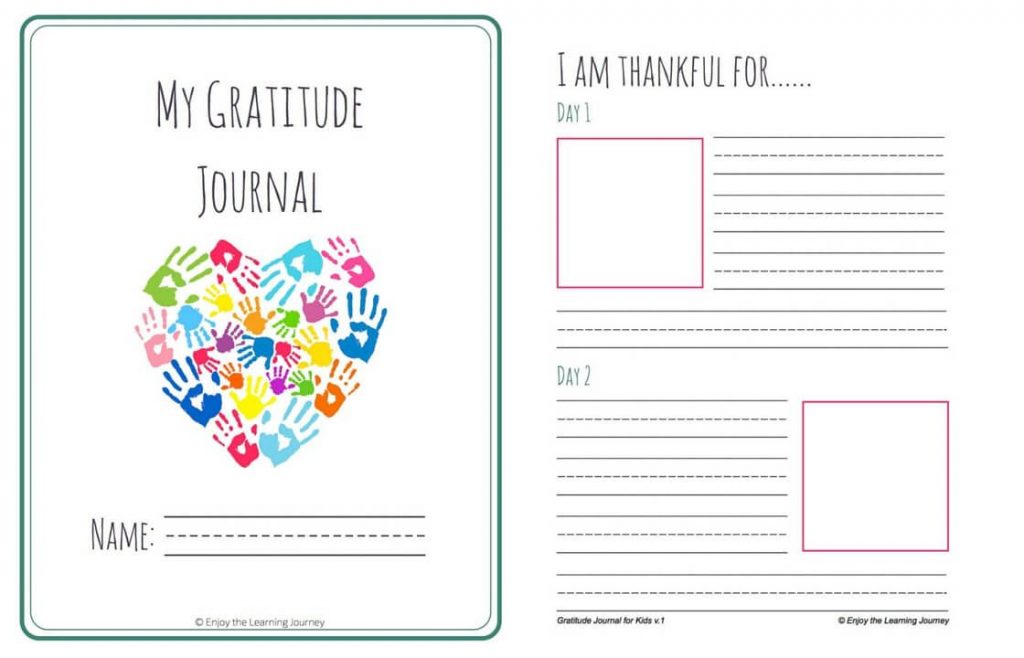
Gratitude journal is one of the best emotions activities for preschoolers. These are simple journals where you and your child write down things you’re thankful for each day.
How can it help: It fosters gratitude and a positive outlook on life.
How to do it: Start a journal and encourage your child to think about moments that made them happy. Write down one thing you’re thankful for each day. It’s like planting seeds of positivity.
Related Reading: Best Gratitude Activities for Kids
8. Puppet Show Expressions
Puppet Show Expressions is all about using puppets to demonstrate different emotions.
How can it help: It allows children to express and recognize emotions in a playful way.
How to do it: Use puppets to act out various emotions like happiness, sadness, anger, or surprise. Encourage your child to interact with the puppets and discuss the feelings they see.
9. Sharing Circle
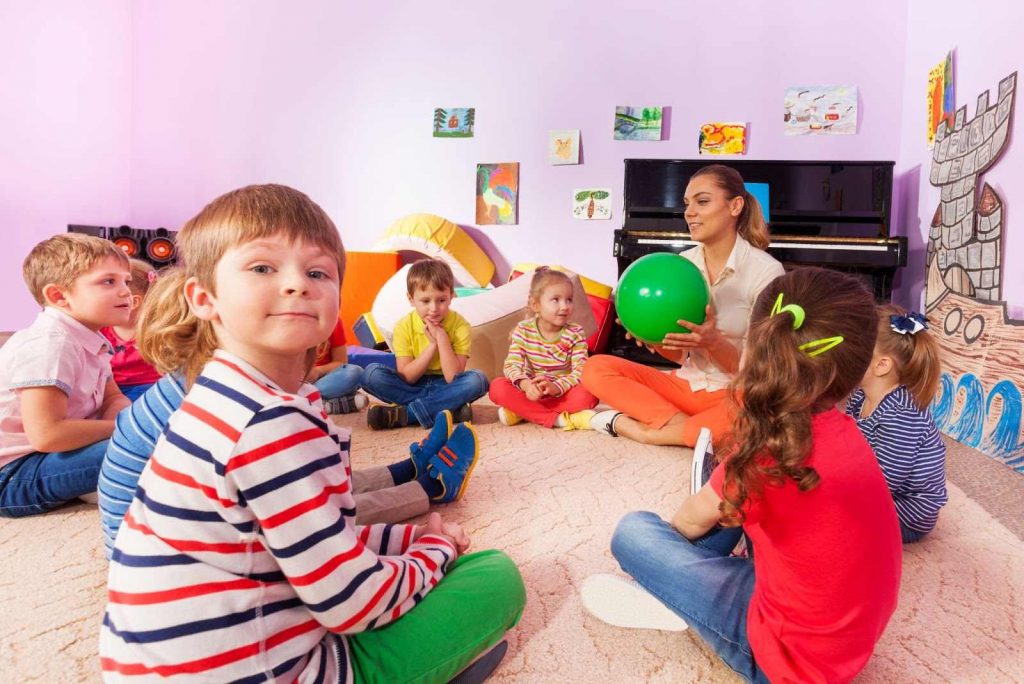
Sharing circle is a great activity for emotional development. In a sharing circle, children take turns sharing their feelings or something special about their day.
How can it help: It promotes communication and empathy as kids learn to listen and respond to each other’s emotions.
How to do it: Sit in a circle with your child and other kids if possible. Start by sharing your own feelings or something positive about your day. Then, let each child take a turn. Encourage listening and supportive responses.
10. Kindness Rocks
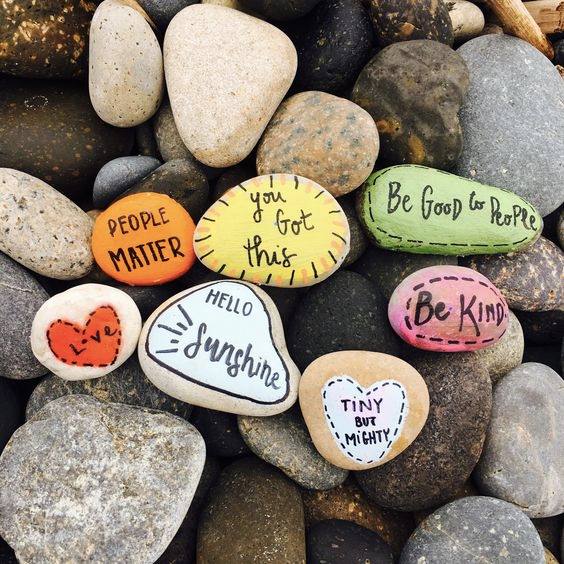
Kindness Rocks involve decorating small rocks with kind messages or images.
How can it help: It encourages kindness and sharing positive emotions with others.
How to do it: Collect some smooth rocks, and together with your child, paint them with cheerful messages or drawings. Leave these kindness rocks in a park or community area for others to find.
11. Feelings Bingo
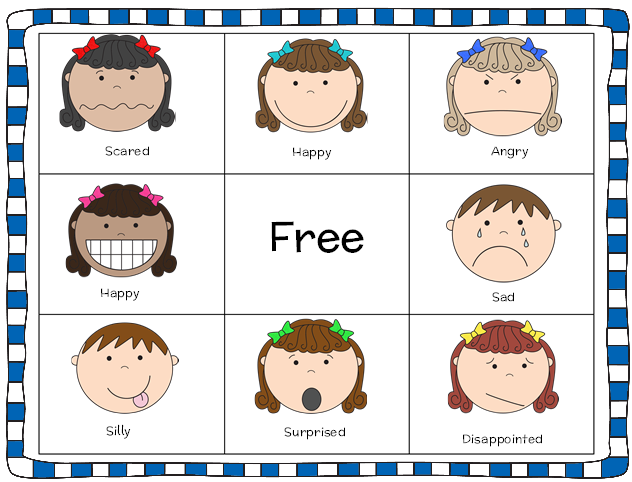
Feelings Bingo is a twist on the classic bingo game, but with emotion cards instead of numbers.
How can it help: It helps children recognize and match emotions while having fun.
How to do it: Create bingo cards with pictures of different emotions. Call out the emotions, and kids can place a marker on the corresponding emotion card on their bingo card. First one to get a row wins!
12. My Feelings Wheel
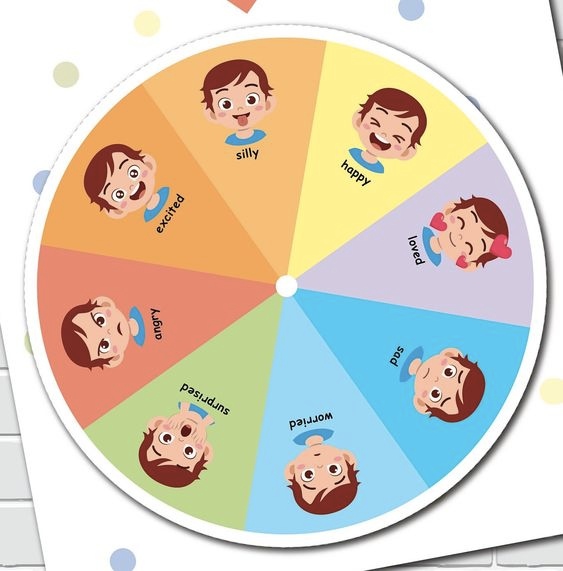
My Feelings Wheel is like a colorful wheel with different emotions to spin and discuss.
How can it help: It’s a visual tool to help children express and understand their emotions.
How to do it: Create a feelings wheel with various emotions on it. Spin the wheel, and when it stops, discuss the emotion it lands on. Encourage your child to share times when they felt that way.
13. Teamwork Puzzles
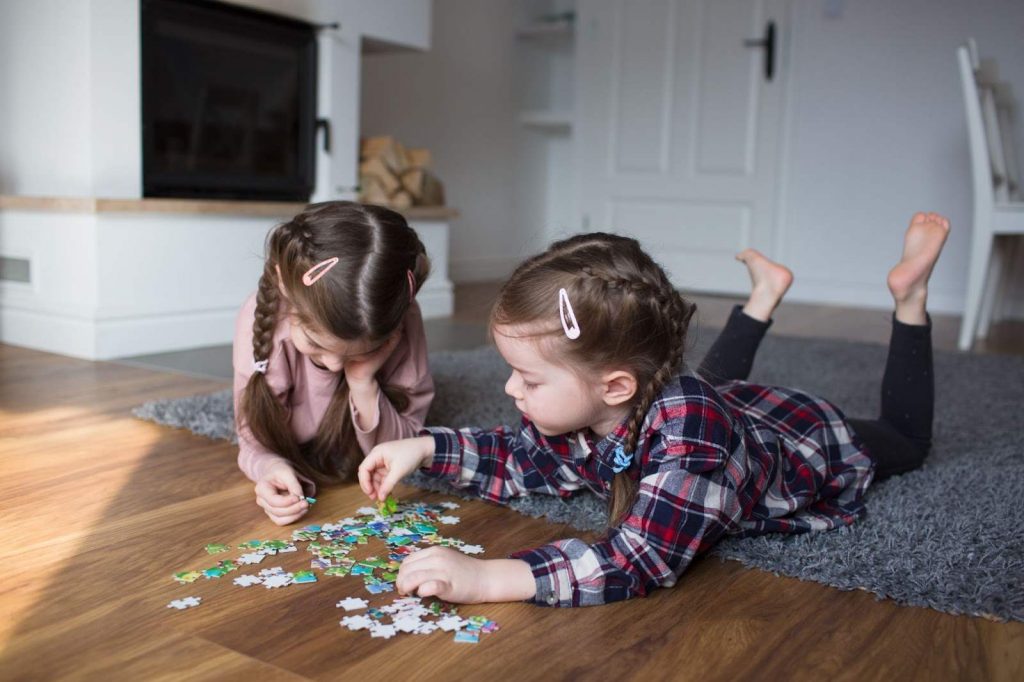
Teamwork Puzzles involve solving jigsaw puzzles together.
How can it help: It teaches cooperation, patience, and emotional regulation.
How to do it: Choose a jigsaw puzzle that’s age-appropriate. Work together to complete the puzzle, emphasizing the importance of teamwork and supporting each other when things get a bit tricky.
Related Reading: Best Indoor and Outdoor Team Building Activities for Kids
14. Nature Scavenger Hunt
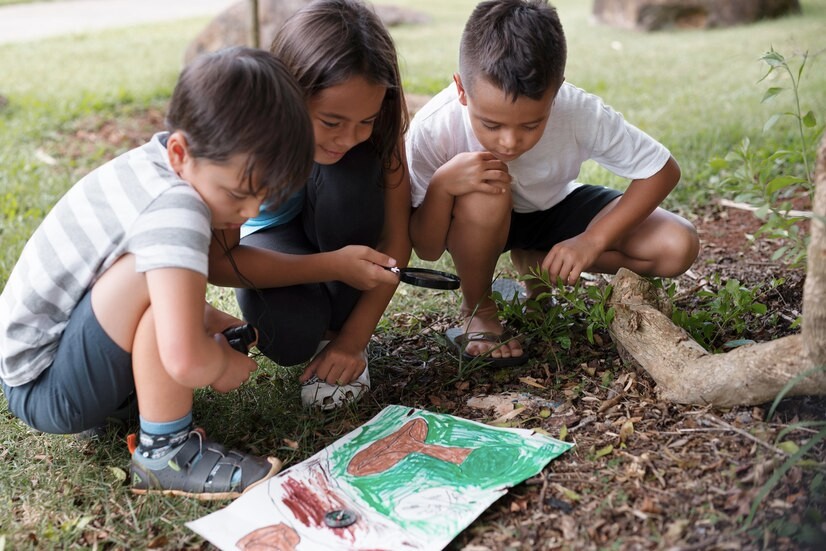
Nature Scavenger Hunt is a fun outdoor activity where children search for natural items.
How can it help: It encourages observation, exploration, and a connection to the environment.
How to do it: Create a list of natural items to find, like a feather, a leaf, or a smooth rock. Go for a nature walk with your child and help them find and collect these items. Discuss how they feel when they find something exciting.
15. Emotion Freeze Dance

Emotion Freeze Dance is a lively game where children dance to music and freeze when you call out an emotion.
How can it help: It helps children connect movement with emotions and encourages emotional expression through dance.
How to do it: Play music and have your child dance around freely. When you call out an emotion (e.g., “happy,” “surprised”), they must freeze and express that emotion through their body and facial expressions.
16. Storytelling with Emotions
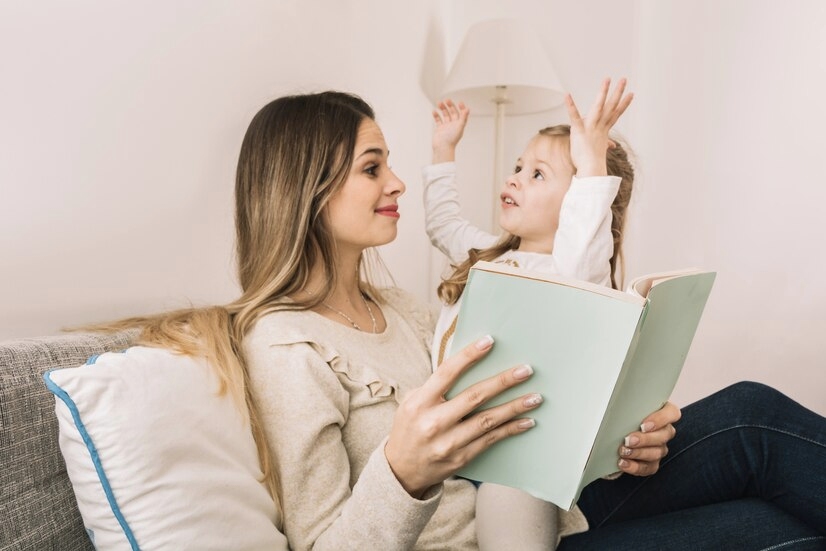
Storytelling with Emotions involves creating stories together and discussing the feelings of the characters.
How can it help: It enhances creativity, emotional understanding, and empathy.
How to do it: Take turns inventing a story and assigning emotions to the characters. Discuss how the characters might feel at different points in the story and why.
17. Calm Down Bottles

Calm Down Bottles are sensory tools filled with glitter and water to help children relax and regulate their emotions.
How can it help: It teaches children how to self-soothe and manage strong emotions.
How to do it: Fill a clear plastic bottle with water and add glitter or small beads. When your child feels upset or overwhelmed, they can shake the bottle and watch the glitter settle as they take calming breaths.
18. Feelings Thermometer
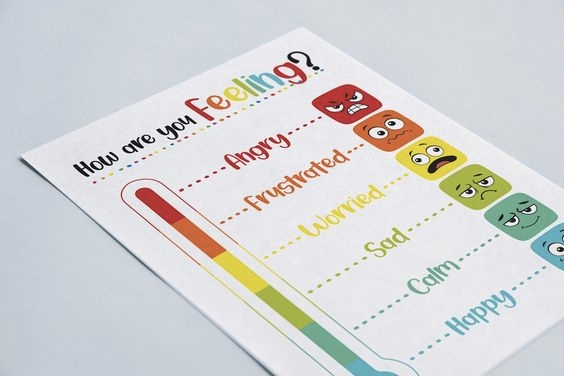
Feelings Thermometer is a visual aid that helps children identify and express their emotions on a scale.
How can it help: It encourages emotional awareness and the ability to express feelings verbally.
How to do it: Create a simple thermometer with a range of emotions, from very sad to very happy. Ask your child to point to where they feel on the thermometer when discussing their feelings.
19. Empathy Drawing
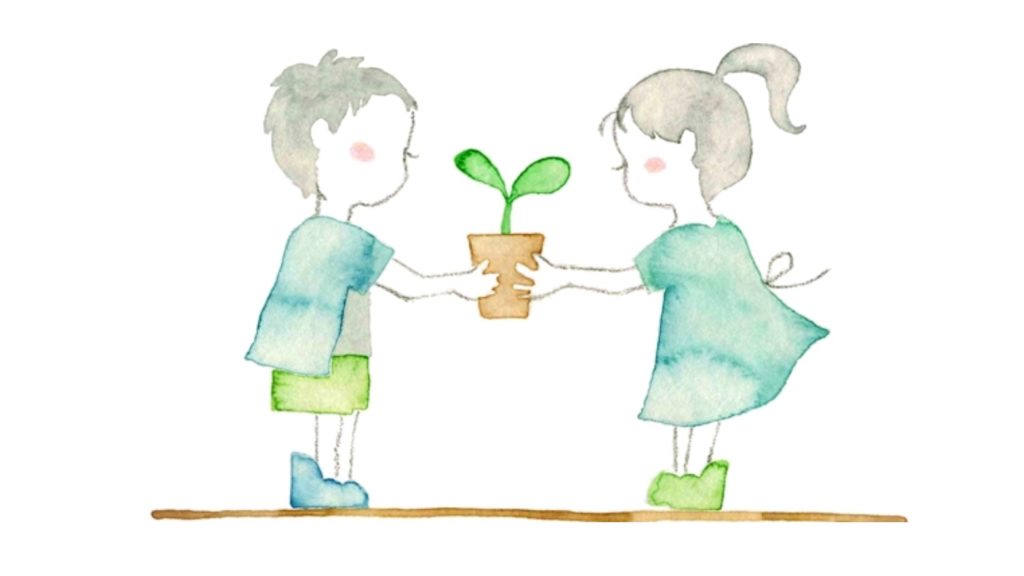
Empathy Drawing involves drawing pictures that reflect how someone else might be feeling.
How can it help: It fosters empathy and the ability to see situations from different perspectives.
How to do it: Choose a scenario or emotion, like a friend feeling sad. Ask your child to draw a picture of what that might look like and discuss why they think their friend feels that way.
20. Conflict Resolution Role Play
Conflict Resolution Role Play allows children to practice resolving conflicts in a safe and guided environment.
How can it help: It teaches problem-solving skills and effective communication.
How to do it: Create scenarios where conflicts may arise, such as sharing toys. Role-play with your child, taking on different roles, and model how to resolve the conflict peacefully.
21. Mindfulness Breathing Exercises

Mindfulness Breathing Exercises involve simple breathing techniques to help children calm their minds and bodies.
How can it help: It promotes emotional regulation, reduces stress, and enhances self-awareness.
How to do it: Teach your child mindful breathing techniques like “balloon breaths” (inflating and deflating like a balloon) or “flower breaths” (inhaling the scent of a flower). Practice these exercises together during calm moments.
These activities are like emotional tools in your child’s toolbox, helping them navigate the world of feelings and relationships with confidence and understanding.
Related Reading: Strategies to Bring Out Mindfulness for Kids
5 Benefits of Social-Emotional Learning Activities
Here’s why these social and emotional activities for preschoolers are a big deal for preschoolers:
- Happy Hearts: Social-emotional activities make kids feel happier. When they understand and manage their feelings better, it’s like they’ve got a superpower for staying cheerful even when things get tough.
- Friendship Fuel: These activities help kids make friends. Imagine being on the playground and knowing how to join a game or share a swing – it’s like a “Friendship 101” class.
- Problem Solvers: When kids practice social-emotional skills, they become excellent problem solvers. They figure out how to tackle issues, like who gets to be the superhero today or how to settle a playtime dispute.
- Good Vibes Only: Children who do these activities tend to be less stressed. They know how to chill out when they’re upset and bring more good vibes to their little worlds.
- Success Stars: Social-emotional learning sets kids up for success later in life. When they’re confident and can handle their feelings well, it’s like building a strong foundation for a future full of accomplishments.
Simple social-emotional development activities, big benefits!
Related Reading: Best Good Vibes Quotes to Help You Better Your Day
Conclusion
As parents, we’re entrusted with the incredible responsibility of nurturing the hearts and minds of our little ones. In the whirlwind of preschool years, where curiosity knows no bounds, social-emotional learning emerges as the guiding light.
Social-emotional activities for preschoolers aren’t just fun and games; they’re the stepping stones to understanding emotions, building friendships, and becoming emotionally resilient individuals. These simple, yet powerful, activities are the keys to unlocking a world of emotional intelligence for our children.
So, let’s embrace these social-emotional activities for preschoolers as moments of connection and growth. Let’s encourage our preschoolers to explore their feelings, express themselves, and understand the emotions of others. Through laughter, play, and gentle guidance, we can help them become emotionally empowered and socially adept individuals ready to conquer life’s adventures.
Related Reading: Calming Strategies for Kids Every Parent Should Know
Frequently Asked Questions (FAQs)
What age is suitable for introducing social-emotional activities to preschoolers?
Social-emotional activities can begin as early as age 2 or 3. It’s never too soon to help children understand and manage their feelings.
How can I make social-emotional learning a part of my daily routine?
Incorporate it into daily life through simple conversations about feelings, using storytime to discuss emotions, and integrating activities into playtime.
Are these social-emotional activities for preschoolers effective for children with special needs or developmental delays?
Yes, they can be adapted to meet the unique needs of children with special needs or developmental delays. Tailor activities to suit their abilities and pace, promoting their social-emotional growth at their own rhythm.

















